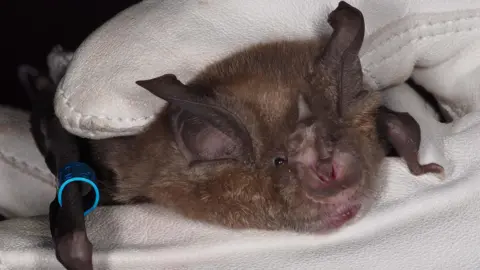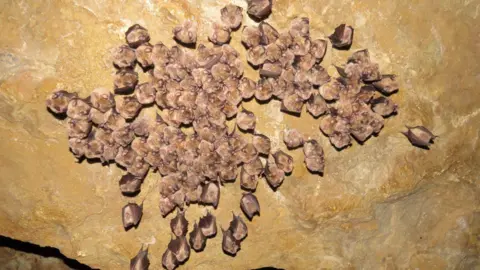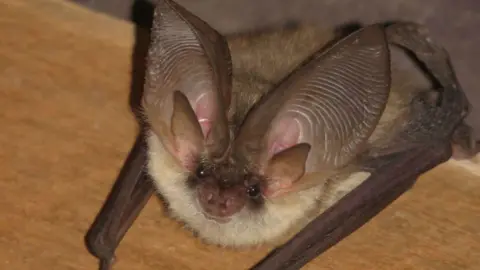Bats protected in new wartime bunker home
 Nick Squirrel
Nick SquirrelRare bats are being protected in wartime bunkers as part of a preservation initiative.
The National Trust is working with the Dorset Bat Group to keep a group of rare bats in Fort Henry safe.
Metal grilles have been added to the historical structures from World War Two to prevent people from entering the areas where the bats are roosting.
Ecologist Michelle Brown said there were five species of bat using the bunkers and it was "great" they were now safe.
Safety measures have also been taken in the Godlinston Heath bunkers in Studland.
Species identified in the bunkers so far include the pipistrelle, soprano pipistrelle, long-eared bat and a currently unspecified type of mouse-eared bat.
Greater horseshoe bats have also been found living in Fort Henry.
 Nick Tomlinson
Nick TomlinsonMs Brown said: "This is one of many projects across Dorset that volunteers from the bat group are helping us with – and we are hugely grateful for their support.
"Roost checks and monitoring with acoustic detectors have already identified five species of bat using the bunkers, so it's great to know that these bats are now safe."
She explained the bunkers make good habitats for the animals as they need cold, humid places with a stable temperature - so the concrete structures were "ideal".
Ms Brown continued: "Purbeck is already an important place for bats, with 15 of 17 breeding UK bats found here.
"But bats are under threat nationally from many things including building work, pesticides and lack of insects. So, we want to be doing all we can to understand and protect these fascinating creatures."
 Nick Tomlinson
Nick TomlinsonThe metal grilles protecting the bats were designed and installed by Colin Morris, known as the Bat Man from Blandford.
He said: "The new grilles allow bats to enter but keep people out. They have only been in place since December, which is the hibernation period, so to have already recorded five species is quite astonishing.
"It's fantastic that all these people are working together for the benefit of bats. There has been little research into how bats use these 'smaller' sites, so now we have the chance to do some robust long-term monitoring."
You can follow BBC Dorset on Facebook, X (Twitter), or Instagram.
